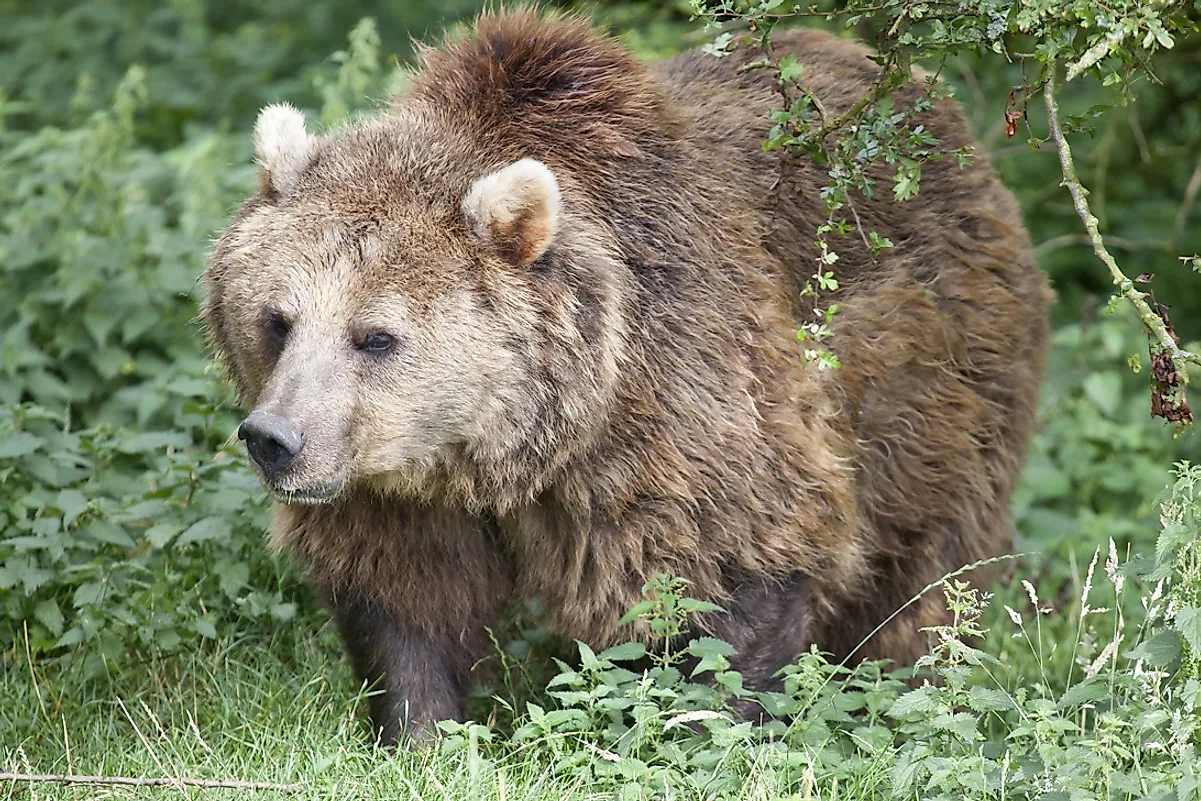Eurasian Bear Facts: Animals of Europe

5. Physical Description
Also referred to as the Brown Bear due to it’s color, the Eurasian bear has a rich, and very thick, coat. The hair of this coat can grow up to five inches long. With a round head, small ears, and a wide skull, the Eurasian bear is hard to miss. Males can reach up to a substantial 800 pounds, while females are much smaller, weighing in at around 300 to 500 pounds. The largest Eurasian bear ever recorded reached lengths of more than eight feet and weighed more than 1,000 pounds. It is more common, however, for male Eurasian brown bears to only grow up to six or seven feet long.
4. Diet
Similar to the diets of their cousins the Grizzly and Syrian brown bears, Eurasian bears are omnivores, meaning they ingest both plants and animal-based foods. Naturally, Eurasian bears will dine on sprouts, plants, roots, insects, fish, and mammals. Although their main animal food sources are relatively small mammals and insects (especially moths), Eurasian brown bears are also known to take down large animals. These animals can range from elk, deer, mountain goats, and bighorn sheep, to bison and muskoxen. However, to take down these animals they must segregate them from the rest of their herds, and it is often the young or sick from these species that are victimized.
3. Habitat and Range
Due to Eurasian bears' vast range throughout Europe and parts of Asia, there is an estimated 100,000 thousand alive today. Of those 100,000, around 70,000 are to be found in Russia. The Eurasian bear can also be found in mountain ranges across Japan, Northwest Africa, and the Himalayas. These brown bears are native to mountainous regions, although they will spread into lower lying forests in some instances, especially as food availability changes. The International Union for the Conservation of Nature's Red List of Threatened Species classifies Eurasian brown bears as a species of "Least Concern".
2. Behavior
Similar to the Canadian grizzly, the Eurasian brown bear dominates its lands as an apex predator. As history will show, Eurasian brown bears' diets were about 80% carnivorous until the Middle Ages. Afterwards, when Humans became a bigger threat and prevented the bears from hunting livestock, the animals had to adapt to their surroundings. Today, the Eurasian brown bear’s diet is only 15% meat. This means the Eurasian bear spends most of it’s time scavenging for berries, leaves, and insects. In very cool areas, such as Serbia, these bears will hibernate during the winter months from December to March. Then, come spring, they begin to stir as their mating season commences.
1. Reproduction
After hibernation, the Eurasian brown bear's mating season lasts from May to July, after which time a female will remain pregnant for 180 to 266 days. Most births occur during the hibernation months, from December through March, as the females can give birth in a much safer location. Much like many young mammals, baby Eurasian brown bears are born incredibly vulnerable and dependent upon their mothers. The babies are born blind and naked, weighing in at only 340 to 680 grams (12 to 24 ounces). By six months of age, a cub will reach 55 pounds, and it will still be nursed by its lactating mother. Yet, small leaves, berries, and insects are slowly being introduced into the young bear cubs' diets at this time. Most bears will die at an early age due to hunting or fighting between males. Nonetheless, Eurasian brown bears can live from 20 to 30 years in the wild if such violent events or illness do not kill them first.











